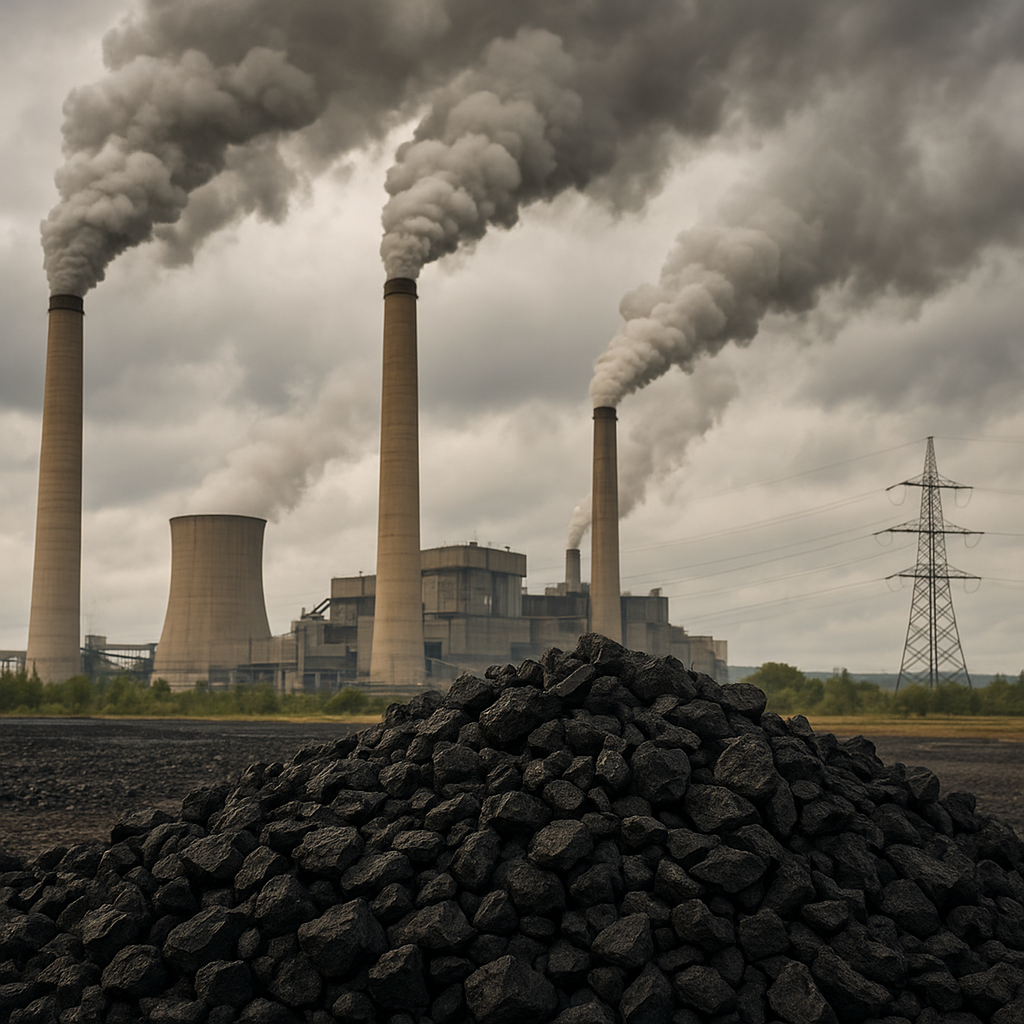
The global energy landscape is undergoing a profound transformation as economies grapple with the delicate balance between **fossil fuels** and cleaner alternatives. Coal, once the bedrock of industrial development, now faces scrutiny over its environmental toll, while coal stock investors confront shifting market dynamics. This article delves into the world of coal, examines its relationship to the stock market, and weighs its sustainability against natural gas, offering insights into how each fuel source shapes the future of energy.
Origins and Composition of Coal
Coal is a **sedimentary** rock formed over millions of years from decomposed plant matter buried under high pressure and temperature. This process produces various coal grades, each with distinct properties:
- Lignite: Also known as brown coal, lignite has the lowest carbon content and heat output, making it less economical for large-scale power generation.
- Sub-bituminous: Offers a moderate calorific value and is often used in electricity plants.
- Bituminous: The most common grade, prized for its high energy density and industrial applications such as steel production.
- Anthracite: The hardest form of coal, with the highest carbon content and few impurities, but limited supply and high cost.
Key components in coal’s composition include carbon, hydrogen, oxygen, sulfur, and trace minerals. The **energy** content, measured in British Thermal Units (BTUs), depends heavily on carbon concentration and moisture levels.
Coal Stock Markets and Investment Dynamics
Coal stocks represent shares of companies engaged in mining, processing, and trading coal. Investors track several indicators to evaluate these equities:
- Market Capitalization: Total value of a company’s outstanding shares, reflecting investor confidence.
- Earnings per Share (EPS): Measures profitability on a per-share basis, indicating operational efficiency.
- Price-to-Earnings (P/E) Ratio: Gauges valuation relative to earnings; a higher P/E may signal growth expectations or overvaluation.
- Reserves-to-Production (R/P) Ratio: Years of remaining coal reserves at current production rates, crucial for long-term viability.
Major players in the coal equity space include both integrated mining giants and niche producers catering to specific industrial sectors. Coal stocks often exhibit **volatility** driven by policy changes, commodity price swings, and environmental regulations.
Factors Influencing Coal Stock Performance
- Regulatory Environment: Stricter emissions standards can dampen demand for high-sulfur coal grades.
- Technological Advances: Carbon capture and storage (CCS) initiatives may enhance coal’s **sustainability** profile.
- Global Demand Shifts: Emerging economies in Asia and Africa still rely heavily on coal for affordable power generation.
- Alternative Energy Prices: Competitiveness of renewables and **natural gas** can sway investor sentiment.
Environmental Impact and Emissions Profile
Coal combustion emits a suite of pollutants, including carbon dioxide (CO₂), **sulfur dioxide** (SO₂), nitrogen oxides (NOₓ), mercury, and particulate matter. These emissions contribute to:
- Global Warming: Coal is the largest single source of anthropogenic CO₂, accounting for over 40% of global emissions.
- Acid Rain: SO₂ and NOₓ form acidic compounds in the atmosphere, harming ecosystems and infrastructure.
- Air Quality Deterioration: Particulates and heavy metals pose health risks, increasing respiratory illnesses.
Mitigation strategies include flue gas desulfurization, electrostatic precipitators, and low-NOₓ burners. However, these technologies raise operational costs and do not eliminate CO₂ emissions.
Coal vs. Natural Gas: A Comparative Sustainability Analysis
Natural gas, primarily composed of methane, is often hailed as a “bridge fuel” due to its lower carbon intensity compared to coal. A direct combustion comparison shows:
- CO₂ Emissions: Natural gas emits roughly 50-60% less CO₂ per unit of energy produced than coal.
- Air Pollutants: Gas combustion releases negligible SO₂ and lower NOₓ, resulting in cleaner exhaust.
- Efficiency: Combined-cycle gas turbines achieve thermal efficiencies above 60%, compared to 35-45% for conventional coal plants.
Despite these advantages, natural gas extraction and transportation can result in **methane leaks**, a potent greenhouse gas with a global warming potential significantly higher than CO₂ over a 20-year horizon.
Lifecycle Emissions and Fugitive Methane
Estimating the full climate impact requires accounting for fugitive methane emissions during drilling, processing, and pipeline distribution. Advances in leak detection and repair (LDAR) programs can reduce these losses, but challenges remain in remote or aging infrastructure.
Economic Considerations and Market Trends
Coal and natural gas markets are shaped by supply-demand dynamics, geopolitical factors, and infrastructure constraints. Key economic drivers include:
- Feedstock Prices: Shale gas revolutions have depressed natural gas prices in certain regions, undermining coal’s competitive edge.
- Export Potential: Coal-exporting nations benefit from rising demand in markets with limited domestic gas reserves.
- Carbon Pricing: Emissions trading schemes and carbon taxes increase the cost of coal-fired power generation relative to gas.
- Infrastructure Investments: Pipelines, terminals, and storage facilities determine regional fuel accessibility and price differentials.
Future Outlook: Transition Pathways and Innovation
The global energy transition demands a multifaceted approach to balance reliability, affordability, and decarbonization:
- Carbon Capture: Scaling up CCS in coal plants could reduce CO₂ emissions by up to 90%, albeit at high capital cost.
- Hydrogen Production: Coal gasification with carbon capture can produce blue hydrogen, serving as a low-carbon feedstock.
- Renewable Integration: Coupling coal or gas plants with solar, wind, and battery storage enhances grid flexibility.
- Policy Incentives: Subsidies, tax credits, and stringent emissions targets drive investment toward cleaner energy.
Ultimately, the role of coal in the energy mix will hinge on the pace of **technological innovation**, regulatory frameworks, and market preferences for lower-carbon solutions. Investors and policymakers must weigh the economic benefits of existing infrastructure against environmental imperatives, steering fuel choices toward a more **resilient** and sustainable future.

